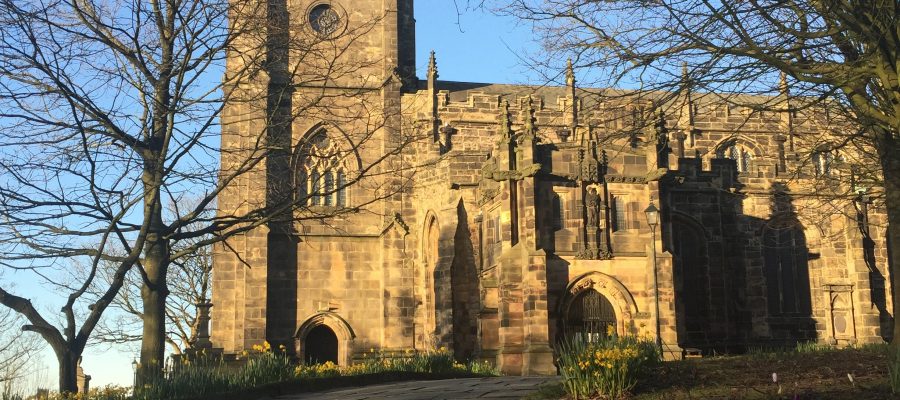
About
Lancaster Priory Church is a Grade 1 listed building, located on a site which has seen Christian worship since Saxon times. It is of huge historical and archaeological importance and is one of the most frequently visited parish churches in the North West. Lancaster Priory is the Mother Church of the City of Lancaster, and it is well known and respected throughout Lancashire and beyond as a place of excellence for its music tradition.
WATCHING OVER LANCASTER
Lancaster Castle and Lancaster Priory Church, which occupy the summit of Castle Hill, stand proudly above the city. It is likely that a Roman building existed on the site prior to others, possibly around the year 200. A Saxon church is thought to have stood on the site from the sixth century. The Medieval Church, much of which still stands today, occupies the site of the original pre-1430s structure. Some of the old stone belonging to the original Priory building has been used in the construction of the existing Church building.
A LONG AND RICH HISTORY
The historic churchyard forms part of the attractive and peaceful setting of these two significant buildings, with long views out to Morecambe Bay. It also forms part of the Scheduled Ancient Monument site of the Wery Wall and Roman settlement on Castle Hill and is therefore of utmost historical and archaeological importance. It contains a number of ‘listed’ monuments of historical interest such as the 19C marble tomb chest and effigy surrounded by cast iron railings and a restored Gothic style 18C sundial. In 1912 excavations revealed a wall beneath the present chancel area, which may be from Roman times, and a small Saxon doorway has been exposed in the west wall of the present nave. See our timeline of events dating back to the 4th century. **
AN INTERESTING AND UNIQUE INTERIOR
The carved choirstalls are of oak and, dating from 1340, are the third oldest in England. They are described as “about the most luxuriant canopies in the country”. The carved pulpit dates from 1619. The stone base of the font was installed in 1848 and its carved wooden cover is dated 1631. The three brass chandeliers are dated 1717. The stained glass in the east window was designed by Edward Paley and made by Wailes. The church plate includes four flagons, a chalice and two bread holders dated 1678–79, a small chalice presented in 1728 and a cup dated 1757. In 1807 a runic cross known as Cynibald’s Cross was found while digging in the churchyard. The cross is 3 feet in length, and 1 foot 9 inches across. The cross is now in the British Museum and a replica is on display near the south west door of the Priory. In the churchyard is a Sandstone Sundial dating from the late 18th century, restored in 1894 and which is listed at Grade II. Also in the churchyard and listed at Grade II are the Rawlinson memorial dating from the late 18th century and a tomb chest with a damaged marble effigy dating from the mid 19th century.
AN INCLUSIVE AND VIBRANT WORSHIPPING COMMUNITY
Worship is at the heart of Lancaster Priory. The church exists to honour God by being an open and inclusive church that enables people to ask questions and discover for themselves the significance of Jesus Christ and we seek to be a place of welcome and hospitality for all.
Whether you are joining us for worship or relaxing to classical music in a candlelit church, Lancaster Priory Church offers everyone a warm welcome in the heart of Lancaster.
Latest News
ANNOUNCEMENT: SUFFRAGAN BISHOP OF DONCASTER
Announcement It has been announced by 10 Downing Street this morning...
Read More...EPIC CYCLING PILGRIMAGE: JONATHAN MAYES, CEO OF CATHEDRALS TRUST, VISITS LANCASTER PRIORY
On Monday 19th May, the Cathedrals Trust CEO visited Lancaster...
Read More...The Lord's Prayer Tour with the Archbishop of York: Sunday 8th June at 4.30pm
As part of The Lord’s Prayer Tour across the...
Read More...

